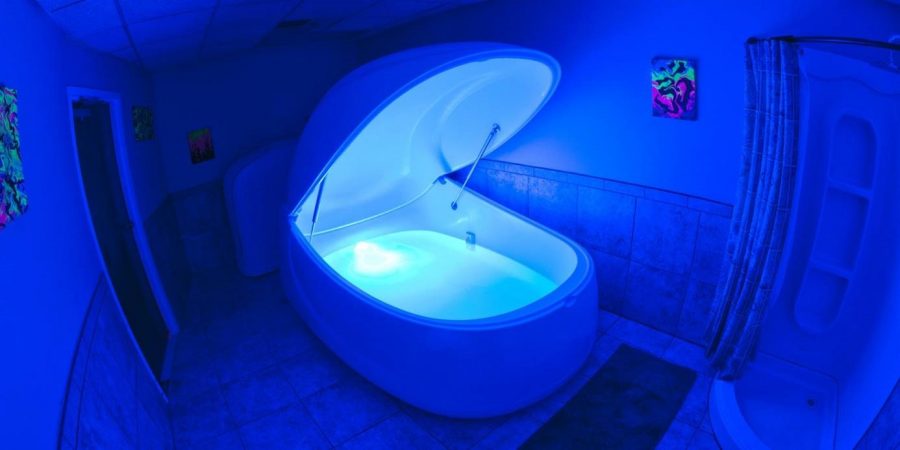Sensory Deprivation Tank
September 20, 2018
I Paid to Be Trapped in a Saltwater Tank
Rose Joffe ’21, Lifestyles Editor
Like many CCDS students, I am often looking for outlets to help reduce the pressures and anxieties that come from our everyday lives. I’ve tried meditation, journaling, yoga, breathing techniques, lowering my caffeine intake and aromatherapy—all without lasting success. I had yet to find something that actually helped me when I heard about sensory deprivation tanks. For anyone wondering, a sensory deprivation tank (otherwise known as an isolation tank) is an egg-shaped tub filled with body-temperature salt water in which one can float without distraction. Although floating is now a trendy method of relaxation, sensory deprivation tanks have been used in scientific research for decades. I was really curious about the experience, especially when I kept hearing about it from people who’d tried it. I wondered how it could possibly be relaxing to just float in a tank. Although a practice as bizarre as sensory deprivation seems like it would be ineffective, the benefits of floating are said to include relief from chronic pain, anxiety, and insomnia. After a little research, I found out that there are actually multiple float lofts in Cincinnati as well as across the country. I was intrigued, so I made an appointment at the Tao Float Loft in Mariemont.
Upon arrival, I was instructed on the floating etiquette. Before floating, it is recommended that you put on a bathing suit and rinse off. Each sensory deprivation tank is in a private room with its own shower. When I got into the tank, I noticed that it was not as enclosed as I thought it would be. Although I was surprised by the spaciousness, I definitely would not recommend floating to someone who is claustrophobic. It is recommended to have the lid of the tank covering it, however there is an option to leave the tank open. Similarly, you can choose to keep the lights on or you can float in the dark. A neck-supporter and a pair of earplugs were provided to use while floating. Although in theory I found the concept of floating in the tank to be very calming, in practice I couldn’t get myself to relax while I was submerged. Instead, I was distracted by my surroundings and I couldn’t quiet my mind or stay still. The sixty-minute session passed slowly and quite honestly I was bored and just waiting for the session to end. I walked out of the float loft feeling slightly relaxed and rested, but I did not feel that my stress level had been reduced. From my experience, floating does not provide a quick fix. Just like a yoga or mediation practice, it takes time and dedication to reap the benefits. Since I’m short on time right now, I’m still searching for a more immediate and efficient antidote.














Sarah Beyreis • Sep 23, 2018 at 8:41 pm
This is wonderful and funny, Rose! I won’t try one!
Aadhya Ramineni • Sep 21, 2018 at 9:16 pm
This is a really interesting article!! Thank you for sharing!